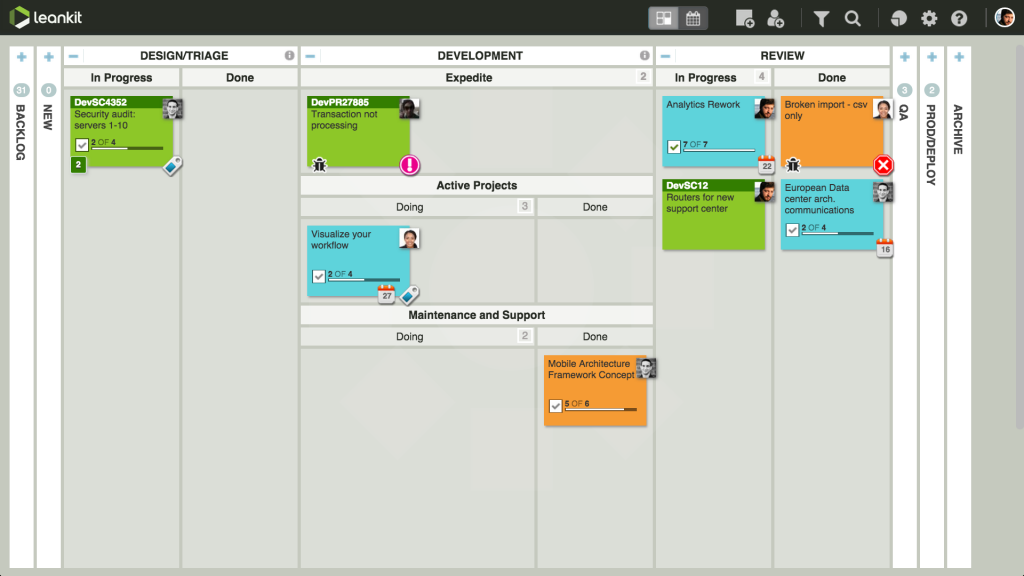
Imagine you’re at the Olympic Games, watching the 4x400m relay race. While one runner carries the baton around the track, the other three runners stand around waiting.
If we ran the relay race like most of us run our businesses, it would look very different.
Each of the idle runners would be running three other races, ensuring that they always have something to do. But each of those races don’t start at exactly the same time, and each of the legs aren’t run with exactly the same speed. In this scenario, it’s the baton that’s waiting for the runners, who are busy (and probably exhausted) from running their other races. As a result, all four races get slower. Much, much slower.
In business, the runners are your workforce, and the baton is the unique value you offer to your customers. Business flow describes how well the work — i.e., the baton — is moving through your business system. It’s not about effective resource utilization (how busy people are); it’s about how much value is actually being produced, and how often.
As an executive, watching the baton is your top priority. This helps you stay focused on keeping the work moving, not on keeping the workers busy.
Why Business Flow is Important
Business flow equips your business for agility, adaptability, and long-term success. It gives organizations numerous ways to grow and learn, particularly through the following opportunities:
- Competitive edge. When the work is flowing, your business has opportunities to learn and improve. It can innovate quickly and invest in a cycle of delivering new products to market, collecting feedback and making adjustments.
- Process improvement. Flow describes how work moves within and throughout your business system. Observing and analyzing it can help you identify areas for improvement, such as places where bottlenecks form or unfinished work waits in queues.
- Quality. Work that flows allows you to focus on delivering higher quality outcomes. By introducing shorter feedback loops, you also introduce many more opportunities to adjust and improve.
- Productivity. Flow helps good people do great work. When the work flows, people can apply their time and skills to getting things done, instead of constantly context-switching, re-prioritizing, and reporting on progress.
3 Strategies to Keep Business Flow Moving
Getting your business to flow will require your leadership in valuing “doneness” over “busyness.” Once again, we’re concentrating on the baton — the work that actually has value.
To do this successfully requires limiting the amount of work in process. For example, if there are 37 races underway and each runner is involved in multiple races, then asking everyone to focus on the baton doesn’t help much. It’s a painful process, but you’ll have to limit how many batons you have in motion at one time. Here are three strategies to help you maintain business flow and prioritize the right batons.
Start with visibility
In any business, much of the work is “invisible.” You can’t walk through the office and “see” the work piling up, as most of it is knowledge-based, stored in people’s heads or on a computer somewhere. So the first step to focusing on flow is to make the work visible.
The easiest way to do this is with a visual kanban board. Cards represent the work moving through the system, and the lanes on the board represent the value-adding steps that the work goes through.

Now that the work is visible, you can see (and measure) how well it is flowing. In addition, everyone in your organization can now see the work. All of you know whether it’s moving or not. Focusing our teams and our people on a shared view of the work gives us a platform for introducing cultural change into the organization.
Limit Work in Process
To improve the flow of work through your business, you can experiment with actions like automating repetitive tasks or removing unnecessary process steps. But, as a leader, one thing above all deserves your time and attention — and it’s a job only you can do. You must limit how many things your business takes on; otherwise, you risk overburdening your organization.
If you don’t limit work in progress (WIP), you’re sacrificing your people — your most valuable asset — on the altar of busyness. When there’s too much work clogging the system, the people working in that system are not able to deliver their best work. Context switching, multi-tasking, and work sitting around waiting for resource availability all combine to cripple productivity, output and motivation.
Cultivate a Lean Culture
Creating a sustainable business flow requires cultural change. A lifetime of working in organizations that reward busyness and hard work results in many bad work habits that employees won’t be able to break on their own. The temptation to “get started” on something or “show progress” is overwhelming. Limiting WIP is hard to do.
But if you acknowledge that the business and its people have a limited capacity, you must make the hard decisions about what to take on, and what not to. Your task as a leader is to create the necessary cultural shift — to value delivery and flow over busyness and efficiency.
The Bottom Line
Focusing your organization on the baton — on flow — can yield tremendous benefits. It isn’t easy, and it isn’t something you can just delegate. Business flow requires leadership, cultural change, and discipline to manage and limit the work. But achieving it helps create opportunities for competitive advantage, continuous improvement, higher quality and more productive employees.
![A Global Collaborative Work Management Blueprint [Video]](https://blog.planview.com/wp-content/uploads/2019/07/A-Global-Collaborative-Work-management-blueprint.png)



